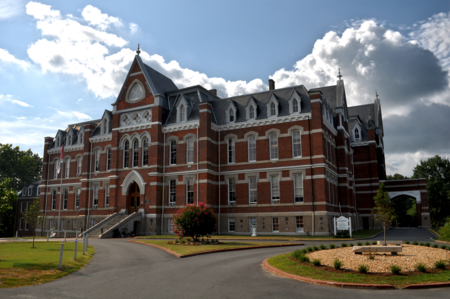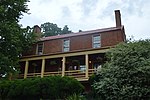The Miller School of Albemarle
1878 establishments in VirginiaGothic Revival architecture in VirginiaNational Register of Historic Places in Albemarle County, VirginiaPrivate high schools in VirginiaSchool buildings completed in 1878 ... and 2 more
School buildings on the National Register of Historic Places in VirginiaSchools in Albemarle County, Virginia

The Miller School of Albemarle is a co-educational private preparatory school located in Albemarle County, Virginia. The school was founded in 1878 with a bequest from Samuel Miller, who provided for the majority of his estate to be used for the establishment of a boarding school for girls and boys to be located on 1,600 acres near his birthplace in Albemarle County. The main building was designed by architect Albert Lybrock.
Excerpt from the Wikipedia article The Miller School of Albemarle (License: CC BY-SA 3.0, Authors, Images).The Miller School of Albemarle
Samuel Miller Loop,
Geographical coordinates (GPS) Address External links Nearby Places Show on map
Geographical coordinates (GPS)
| Latitude | Longitude |
|---|---|
| N 38.0059 ° | E -78.7013 ° |
Address
Miller School of Albemarle
Samuel Miller Loop
22903
Virginia, United States
Open on Google Maps







